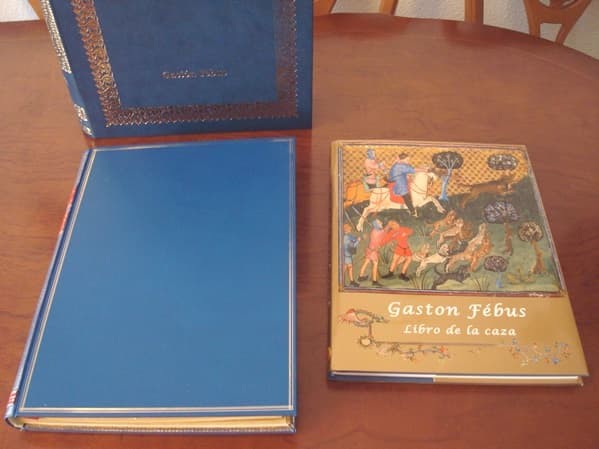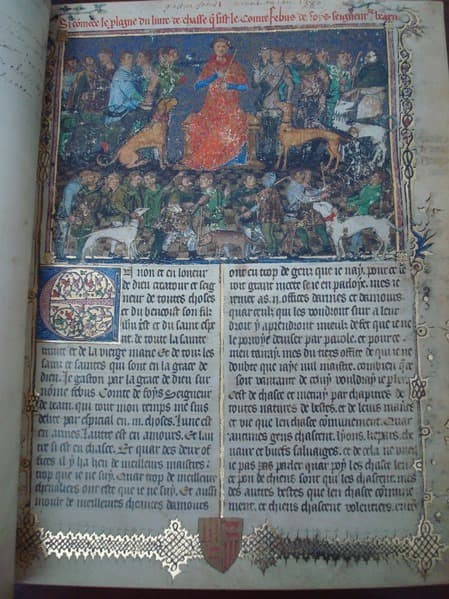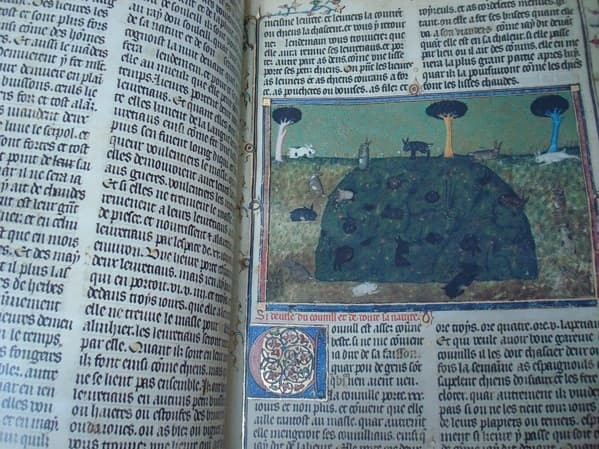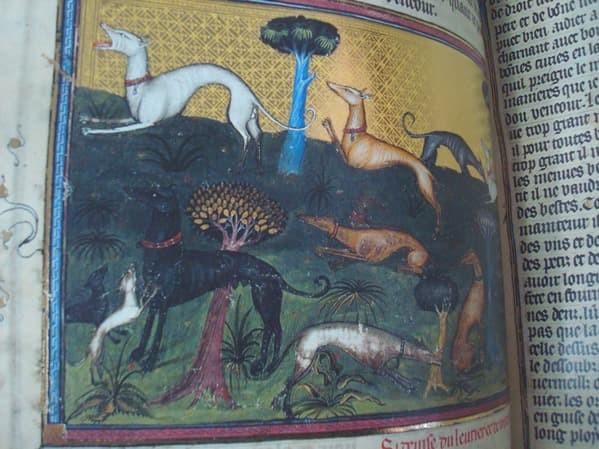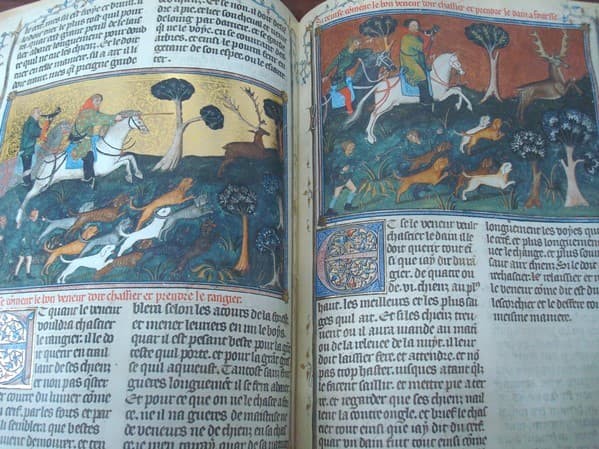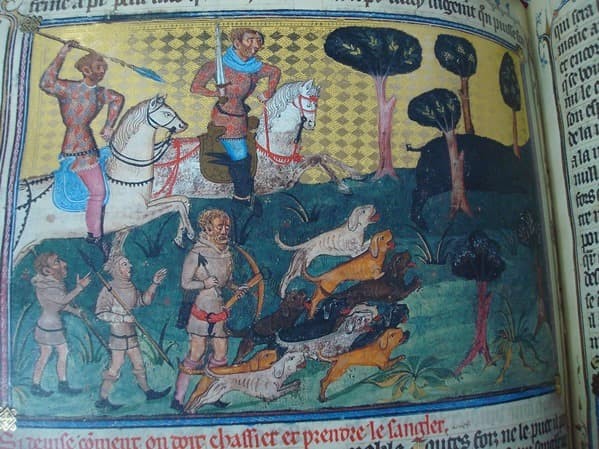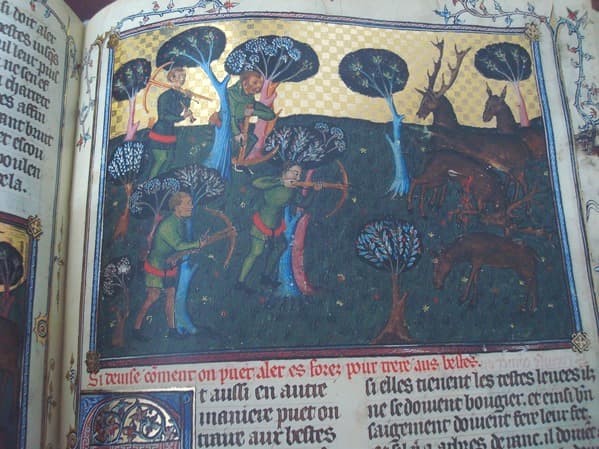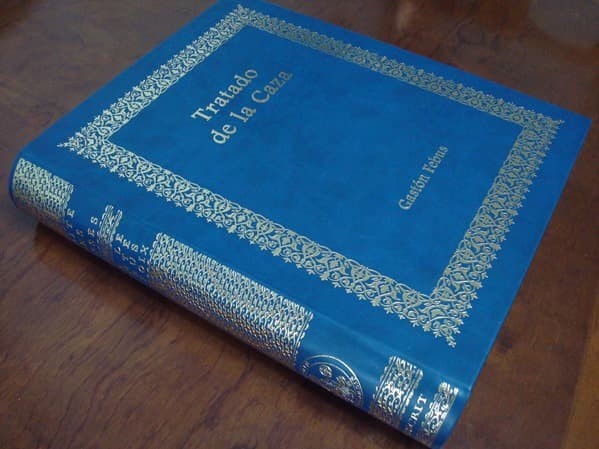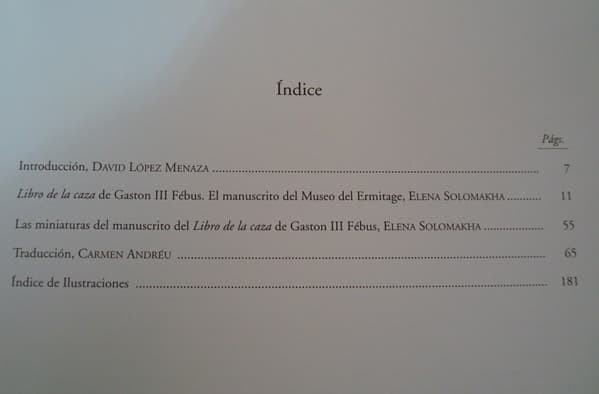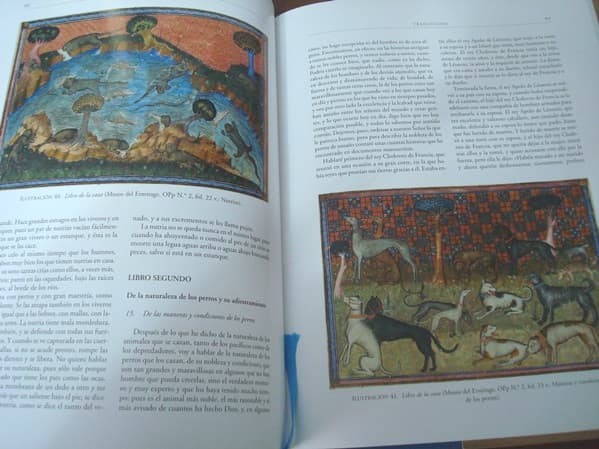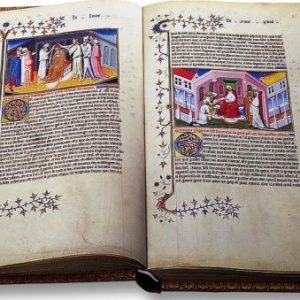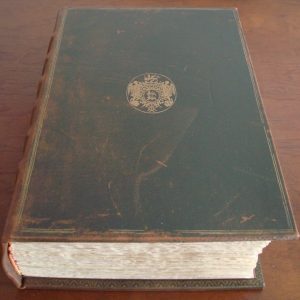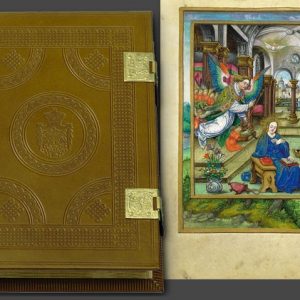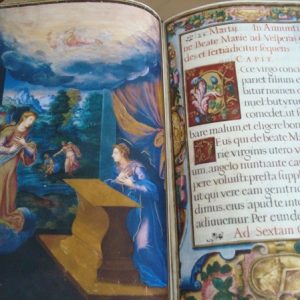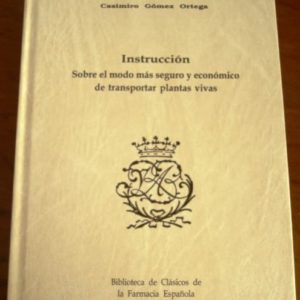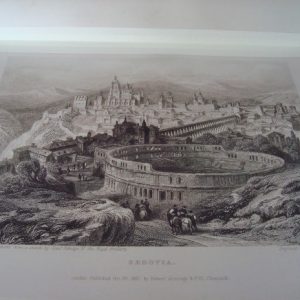Description
Hunting was the aristocratic sport par excellence and was endowed with great sophistication; It was practiced in times of peace and was always associated with religious saints. Alfonso X the Wise (1256-1348) wrote in his Partidas: “How the king must be crafty in hunting”.
Gaston III, nicknamed Fébus by his golden hair, sovereign of the County of Foix and Bearn, in the French Pyrenees, bequeathed to posterity one of the best medieval treatises on the subject.
During the years 1387-1389 Gastón Febus wrote his Book of the Hunting, allegorical, profane and religious book at the same time, considered one of the best that was written in the Middle Ages and a valuable testimony on the cultural history of the Middle Ages; It was used until the 19th century as a natural history textbook.
Of all the production of the famous manuscript of La Caza on the desks, the copy preserved in the Library of the Ermitage Museum (OPpNº2), in St. Petersburg (Russia), is considered by its antiquity and beauty as the height of all others.
The codex develops the hunting theme in a pedagogical way for a good learning of hunting: it indicates how to deal with wild animals, their behavior and their biology; also gives precise instructions to hunters in terms of training, breeds and characteristics of dogs …
In all its composition, the Book of the Hunt is revealed as a real practical manual, and this pragmatism powerfully contributes the miniatures that decorate it: seventy-eight dazzling miniatures embellish the pages of this wonderful codex, and its refined and ingenious style makes it in the most representative expression of French style art of the first half of the fourteenth century. The miniatures capture with an unparalleled realism the art of hunting and its rituals: the horses, richly harnessed with embroideries of the arms of their owner, the type of clothing, the preparation of the hunters and the animals, and the type of prey what was sought
The author of the miniatures was an active painter in Avignon who owned a famous workshop at that time, Jean de Toulouse. For the first time the techniques of representing animals used in the previous century by the miniaturists of bestiaries and of various treatises with observations acquired from the study of nature, in the manner of Giovannino de Grassi, are combined. All images of the Ermitage manuscript are enriched with gold. This combination of light and color gives each one of the miniatures of this codex the character of an authentic work of art.
Facsimile bound in blue kidskin on a gold-stamped table, both on the covers and on the back and internal thread, guide tape. Format 26.5 x 34.5 cm. 226 pages containing 77 large format miniatures, many of them with exquisite and beautifully graffiti golds, and all the pages ornamented with floral motifs and multiple capitulars in gold. Written in French and Latin.
Presented in a beautiful book case in blue-gold leather for better preservation, format 31.8 x 38 x 7.5 cm.
The facsimile is accompanied by the complementary study book, made by specialists in the field, including the translation of the original text into Spanish. Bound in hard cover with color dust jacket, guide tape, format 25 x 32 cm. 184 pages with 104 illustrations.
Edition made in 2013, numbered and limited to 949 copies, duly authenticated with notarial deed, this copy being especially attractive for lovers of Numerology (less than 50).
Shipping costs on behalf of the buyer, according to order and destination. Consult us without obligation (indicating the reference of the article) any doubt.




